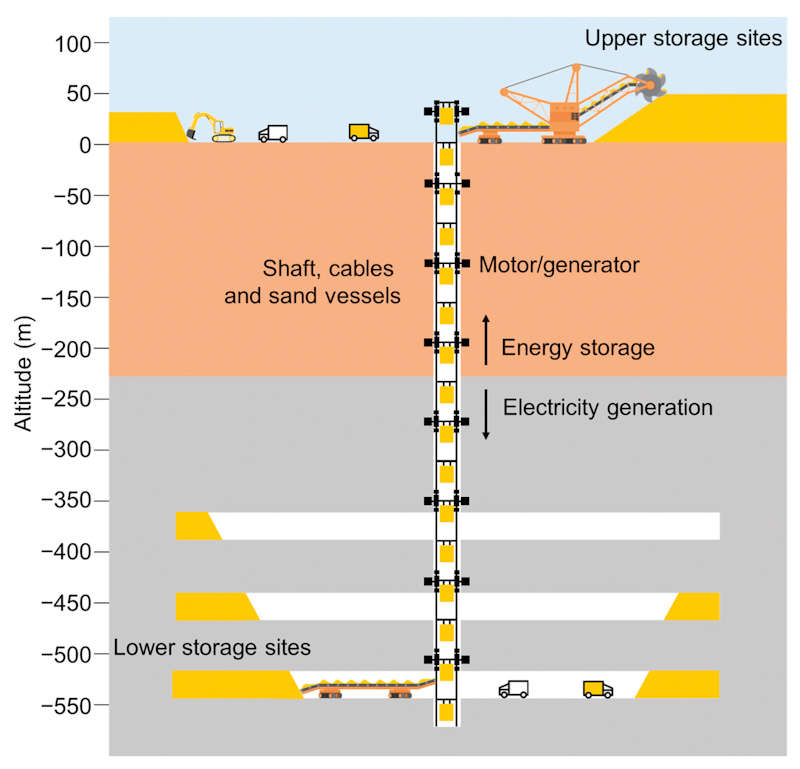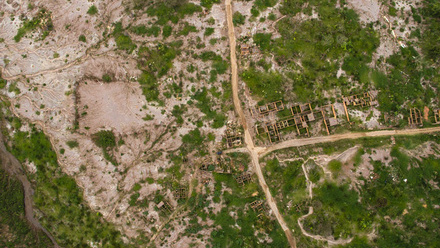Decommissioned mines converted to energy storage
A novel technique called Underground Gravity Energy Storage (UGES) seeks to turn decommissioned mines into long-term energy storage solutions.

As a cost-effective long-term solution to energy storage is still lacking, the new study led by the International Institute for Applied Systems Analysis (IIASA) in Austria has developed a way to store energy by transporting sand in abandoned underground mines.
UGES would generate electricity when the price is high by lowering sand into an underground mine and converting the potential energy of the sand into electricity via regenerative braking.
It then lifts the sand from the mine to an upper reservoir using electric motors to store energy when electricity is cheap.
'The idea is to buy cheap energy and generate when it is expensive,' says Julian Hunt, an IIASA researcher and the lead author of the study. The efficiency varies from 60-80%.
The main components of UGES are the motor/generator, shaft, upper and lower storage sites, and mining equipment.
Hunt says, 'The energy stored is directly proportional to the weight of the sand and the depth of the shaft, i.e. if the weight doubles, the energy stored doubles.'
One mine could store from 10-100GWh, using 5-50Mt of sand. The deeper and broader the mineshaft, the more power can be extracted, and the larger the mine, the higher the energy storage capacity.
While Hunt admits, 'The technologies to implement UGES are 100 years old…The technology to operate the mine autonomously is new. It is important to operate the plant autonomously to make it viable.'
He explains that other energy storage methods, like batteries, lose energy via self-discharge over long periods. Whereas the energy storage medium of UGES is sand, meaning that there is no energy lost to self-discharge, enabling ultra-long energy storage.
'UGES is designed to store energy for a few weeks, months, seasons or years. If the plant has 10MW power capacity, it would generate 240MWh per day,' suggests Hunt.
The investment costs are about US$1-10/kWh and power capacity costs of US$2,000/kW. The technology is estimated to have a global potential of 7-70TWh, with most of this potential in China, India, Russia and the USA, according to Hunt.
He continues, 'Europe has high solar generation potential in the summer and high demand for electricity in the winter. UGES could store energy during the summer to generate during the winter. It also has hundreds of decommissioned mines available.
'When a mine closes, it lays off thousands of workers. This devastates communities that rely only on the mine for their economic output. UGES would create a few vacancies as the mine would provide energy storage services after it stops operations,' he says.
'Mines already have the basic infrastructure and are connected to the power grid, which significantly reduces the cost and facilitates the implementation of UGES plants.
'It has not been trialled in a mine, but all equipment exists to develop a project. It would be interesting to operate it automated to reduce operational costs.'
He acknowledges that other similar projects exist, but 'the technology is slightly different to UGES'.







